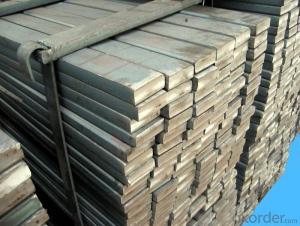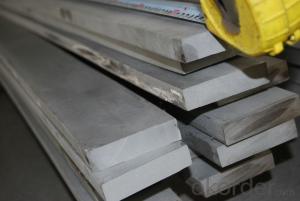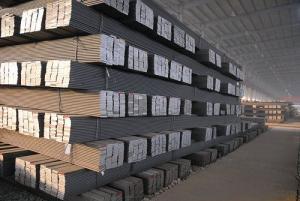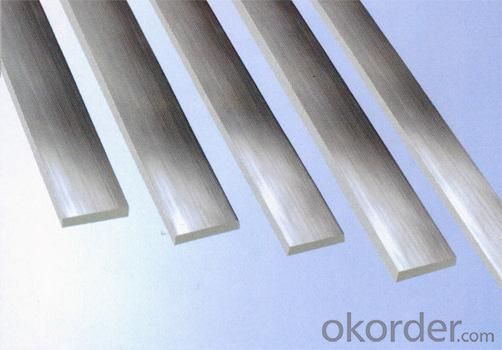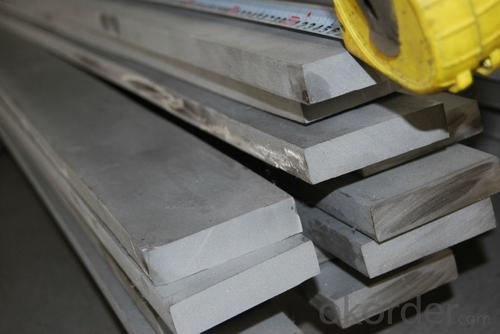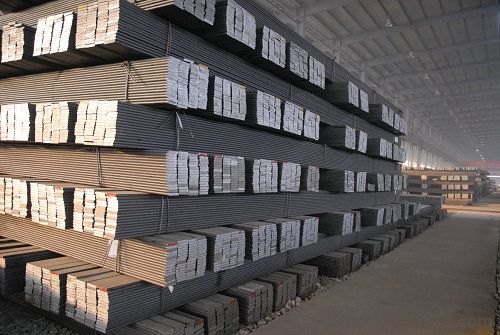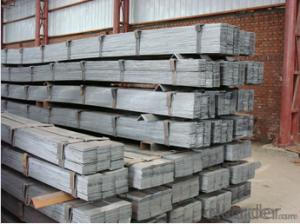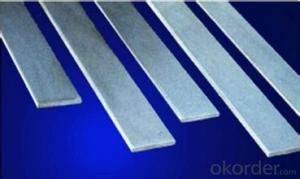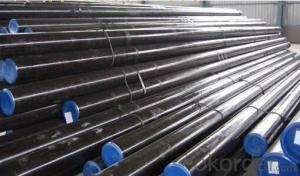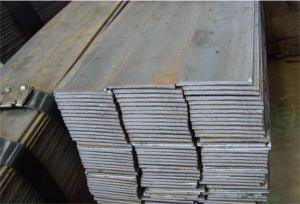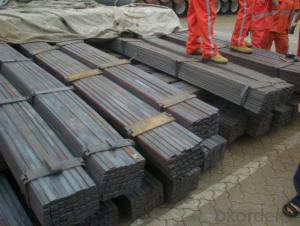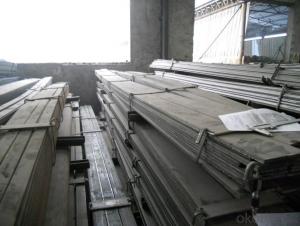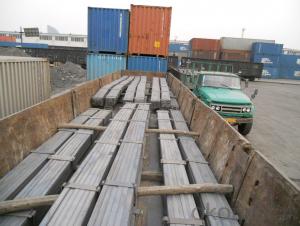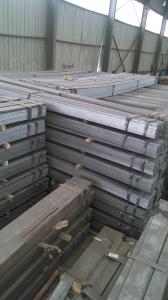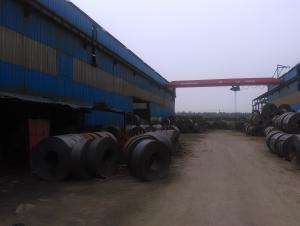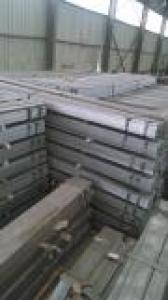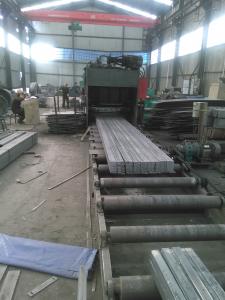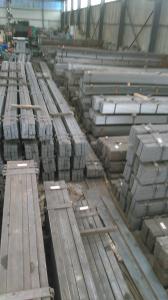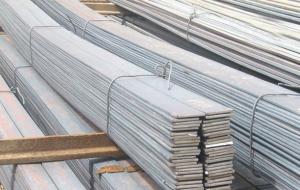Spring stainless steel flat bar for construction
- Loading Port:
- Tianjin
- Payment Terms:
- TT OR LC
- Min Order Qty:
- 10000 m.t.
- Supply Capability:
- 100000 m.t./month
OKorder Service Pledge
OKorder Financial Service
You Might Also Like
Specification
Product Description:
OKorder is offering spring stainless steel flat bar for construction at great prices with worldwide shipping. Our supplier is a world-class manufacturer of steel, with our products utilized the world over. OKorder annually supplies products to European, North American and Asian markets. We provide quotations within 24 hours of receiving an inquiry and guarantee competitive prices.
Product Applications:
Spring stainless steel flat bar are ideal for structural applications and are widely used in the construction of buildings and bridges, and the manufacturing, petrochemical, and transportation industries.
Product Advantages:
OKorder's Steel flat bar are durable, strong, and resist corrosion.
Main Product Features:
· Premium quality
· Prompt delivery & seaworthy packing (30 days after receiving deposit)
· Corrosion resistance
· Can be recycled and reused
· Mill test certification
· Professional Service
· Competitive pricing
Product Specifications:
Spring Steel can be divided into two types. One is carbon spring steel, and other one is alloy spring steel.
Alloy spring steel is based on carbon spring steel, by adding one or more alloying elements to improve the mechanical properties, hardenability and other properties to meet the requirement for manufacturing all kinds of spring steel.
Specification of Spring Steel:
-Material: 70Si2CrA
-Production: Hot rolled or cold rolled
-Standard: GB/T·5218-1999
-Type: Spring Steel
-Alloy or no: Alloy
Mechanical Properties:
-Annealing Condition:
1, Tensile Strength: σb/MPa:≤835
2, Elongation: δ/%:≥8
-Quencher condition:
1, Tensile strength: σb/MPa:785~1175
2, Elongation: -
Usage/Applications of Spring Steel:
For manufacturing all kinds of flat spring or round spring with small sections, clockwork spring,
Packaging & Delivery of Spring Steel:
-Packing Detail: The products can be packed in bundles by steel wires.
-Marks:
1, Tag marks: the tag marks will be tied up to each bundle of the products. The information is usually including supplier’s logo and name, product name, made in China, products’ specifications, the painted color and other information requested by customers.
2, Color marks: we will paint both ends of the bundles of these products to make sure that they are more evident. It’s will be more convenient for the customers to distinguish them at the destination port.
-Delivery Detail:
1, Delivery time: 30~45 working days after receive buyer’s T.T. or L/C.
2, Delivery status should be written in the contract. (Heat treatment or no)
Payment:
-Invoicing on theoretical weight or actual weight as customer’s request.
-FOB, CFR or CIF.
-Regular terms of payment:
1, 30% payment in advance, the remaining balance (70% payment) against the copy of B/L. 100% payment before shipment.
2, 30% payment in advance, the remaining balance (70% L/C) against the copy of B/L. 100% payment before shipment.
3, Negotiable.
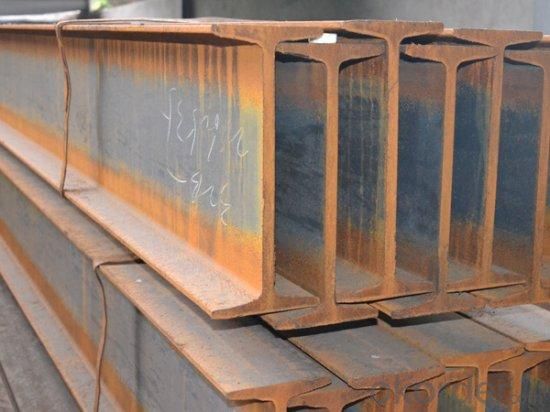
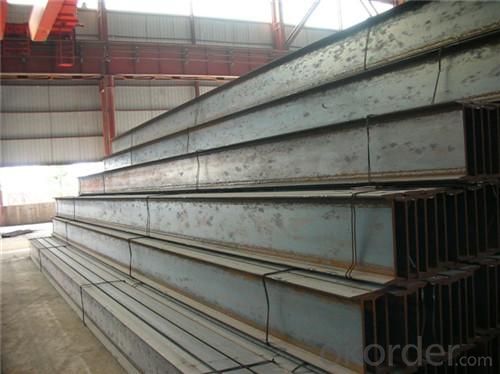
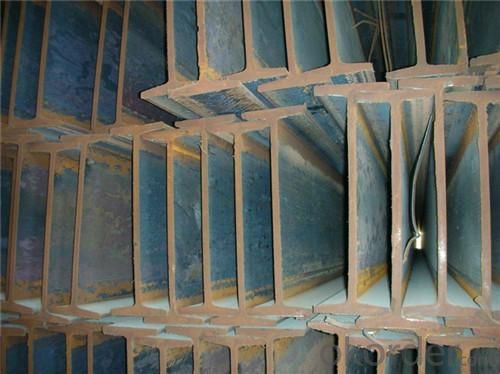
FAQ:
Q1: Why buy Materials & Equipment from OKorder.com?
A1: All products offered byOKorder.com are carefully selected from China's most reliable manufacturing enterprises. Through its ISO certifications, OKorder.com adheres to the highest standards and a commitment to supply chain safety and customer satisfaction.
Q2: Can stainless steel rust?
A2: Stainless does not "rust" as you think of regular steel rusting with a red oxide on the surface that flakes off. If you see red rust it is probably due to some iron particles that have contaminated the surface of the stainless steel and it is these iron particles that are rusting. Look at the source of the rusting and see if you can remove it from the surface.
- Q: Can steel flat bars be painted or powder-coated?
- Certainly! It is indeed possible to paint or powder-coat steel flat bars. By applying paint or powder-coating, one can safeguard against corrosion, improve their visual appeal, and achieve a personalized touch. Before commencing with the painting or powder-coating task, it is crucial to adequately prepare the surface of the steel flat bars by eliminating any rust, dirt, or oil. This can be accomplished by means of cleaning, sanding, or utilizing a primer. Once the surface has been prepared, an appropriate paint or powder coating can be administered. Through this process, the steel flat bars will be shielded and obtain a long-lasting and aesthetically pleasing finish.
- Q: Can steel flat bars be used for fencing or gate fabrication?
- Steel flat bars are suitable for fencing and gate fabrication purposes. Due to their durability, strength, and versatility, they are frequently employed in fencing and gate projects. By conveniently welding or bolting them together, a sturdy and secure fencing or gate structure can be created. Moreover, steel flat bars can be tailored to meet specific design criteria, rendering them a favored option for both residential and commercial fencing and gate applications.
- Q: Can steel flat bars be used for tool and die making?
- Yes, steel flat bars can be used for tool and die making. Tool and die making requires materials that are strong, durable, and can withstand the high pressures and temperatures involved in the manufacturing process. Steel flat bars are often chosen for this purpose due to their excellent strength-to-weight ratio and resistance to wear and tear. They can be easily machined, shaped, and hardened to meet the specific requirements of the tool or die being fabricated. Additionally, steel flat bars are readily available in various sizes and grades, making them a versatile choice for tool and die making applications.
- Q: What is the standard thickness of a steel flat bar?
- The specific application and industry standards are what determine the standard thickness of a steel flat bar, which can vary. Nevertheless, commonly found steel flat bars usually come in thicknesses ranging from 1/8 inch to 1 inch. It's worth mentioning that custom sizes and thicknesses are also offered to fulfill specific requirements.
- Q: How do you prevent steel flat bars from warping during welding or fabrication?
- To prevent steel flat bars from warping during welding or fabrication, there are several techniques and precautions that can be taken: 1. Proper storage and handling: Ensure that the steel flat bars are stored in a dry and stable environment to prevent any moisture absorption or exposure to extreme temperature fluctuations. Avoid bending or dropping the bars, as this can cause stress and deformation. 2. Preheating: Preheating the steel flat bars before welding can help reduce the risk of warping. This is especially important when working with thicker bars or when welding multiple bars together. Preheating helps to reduce thermal gradients and minimizes the stress caused by rapid cooling during welding. 3. Tack welding: Instead of welding the entire length of the bar at once, tack welding involves making a series of small welds along the joint. This helps to distribute the heat evenly and prevents excessive heat buildup in one area, which can lead to warping. 4. Welding sequence: Plan the welding sequence carefully, starting from the center and moving outward. This helps to evenly distribute the heat and reduces the risk of warping. Avoid welding too quickly or applying excessive heat, as it can cause distortion. 5. Proper fixturing: Using proper fixtures and clamps can help hold the steel flat bars in place during welding, minimizing movement and potential warping. Ensure that the bars are securely and uniformly clamped to prevent any bending or distortion during the welding process. 6. Backstep welding: This technique involves welding in short sections and moving backward along the joint. By applying heat in a controlled manner and allowing each section to cool before moving on, the risk of warping can be reduced. 7. Post-welding stress relief: After welding, it is important to relieve any residual stress in the steel flat bars. This can be done through various methods such as heat treatment or mechanical methods like hammering or rolling. Stress relief helps to minimize the risk of warping and improves the overall stability of the bars. By applying these precautions and techniques, it is possible to minimize the risk of warping during the welding or fabrication of steel flat bars, ensuring a more precise and reliable end product.
- Q: What are the different testing methods used for quality control of steel flat bars?
- There are several testing methods used for quality control of steel flat bars, including destructive and non-destructive methods. Destructive methods involve physical testing such as tensile testing, hardness testing, and impact testing to assess the mechanical properties of the steel. Non-destructive methods include visual inspection, ultrasonic testing, magnetic particle testing, and dye penetrant testing to detect any surface defects or internal flaws in the steel. These testing methods are essential to ensure the quality and performance of steel flat bars in various applications.
- Q: Are steel flat bars suitable for making furniture?
- Certainly, furniture can be made using steel flat bars. Steel possesses robustness and durability, enabling it to bear significant weight and offer stability to furniture components. Tables, chairs, shelves, and frames can all be fashioned using steel flat bars, contributing to a contemporary and polished appearance that seamlessly complements various design styles. Furthermore, steel's resistance to rust and corrosion ensures furniture's longevity and minimizes maintenance requirements. Ultimately, steel flat bars furnish the essential attributes of strength, stability, and adaptability indispensable for furniture manufacturing.
- Q: Are steel flat bars suitable for machine parts?
- Yes, steel flat bars are suitable for machine parts. Steel flat bars are known for their strength, durability, and versatility, making them an ideal choice for various machine parts. They can withstand high loads, provide stability, and are easily machinable, making them suitable for a wide range of applications in different industries.
- Q: Can steel flat bars be used for manufacturing furniture?
- Yes, steel flat bars can be used for manufacturing furniture. Steel is a strong and durable material that can provide stability and support for furniture pieces. Steel flat bars can be used to create the frames and structures of various furniture items such as tables, chairs, shelves, and cabinets. They can be easily welded, cut, and shaped to fit the desired design and dimensions of the furniture. Additionally, steel flat bars are resistant to warping, cracking, and rotting, making them suitable for long-lasting furniture pieces. However, it is important to consider the aesthetic appeal and comfort of the furniture, as steel can be heavy and may require additional elements like cushions or upholstery to enhance comfort.
- Q: Can steel flat bars be used in agricultural applications?
- Yes, steel flat bars can be used in agricultural applications. Steel flat bars are versatile and have several properties that make them suitable for use in the agricultural industry. Firstly, steel flat bars are known for their strength and durability. They can withstand heavy loads and provide structural support, making them ideal for agricultural equipment such as trailers, plows, and cultivators. Additionally, steel flat bars are resistant to corrosion, which is crucial in agricultural settings where exposure to moisture, chemicals, and fertilizers is common. This resistance ensures the longevity of the equipment and reduces maintenance costs. Furthermore, steel flat bars are highly malleable, which allows for easy fabrication and customization. They can be bent, cut, or welded to meet specific requirements and design needs. This flexibility makes them suitable for various agricultural applications, such as constructing fences, gates, and animal enclosures. Overall, the strength, durability, corrosion resistance, and malleability of steel flat bars make them a reliable choice for agricultural applications. They provide the necessary support, withstand harsh conditions, and are easily adaptable to different agricultural requirements.
Send your message to us
Spring stainless steel flat bar for construction
- Loading Port:
- Tianjin
- Payment Terms:
- TT OR LC
- Min Order Qty:
- 10000 m.t.
- Supply Capability:
- 100000 m.t./month
OKorder Service Pledge
OKorder Financial Service
Similar products
Hot products
Hot Searches
Related keywords

